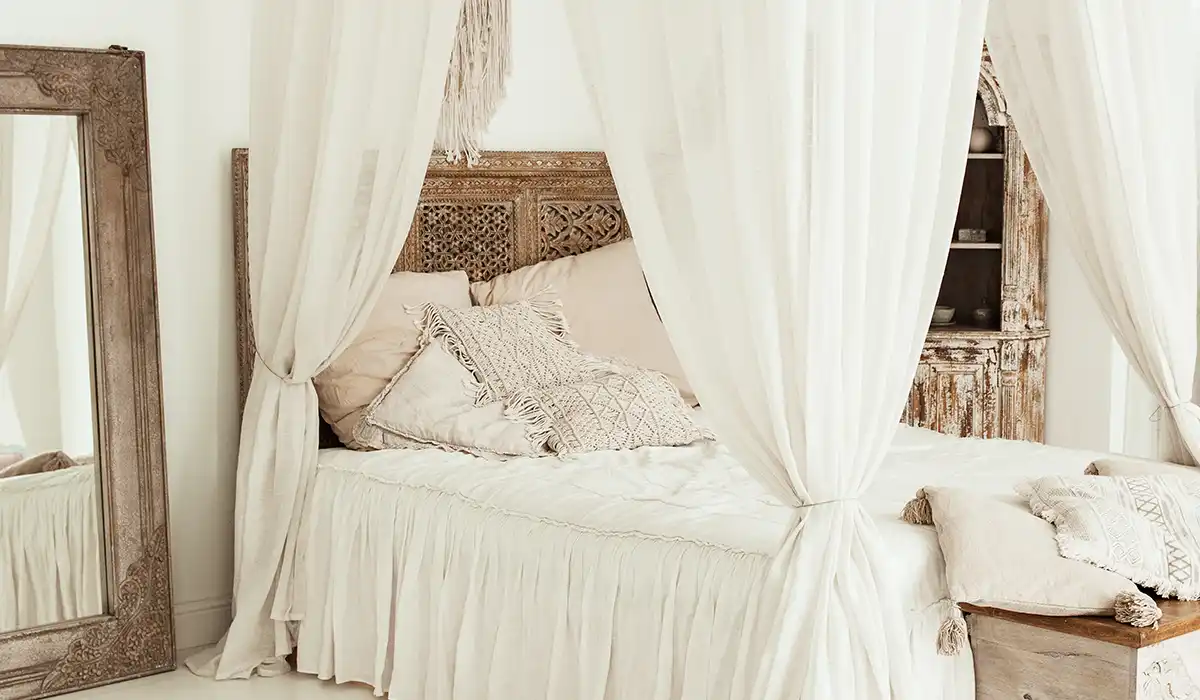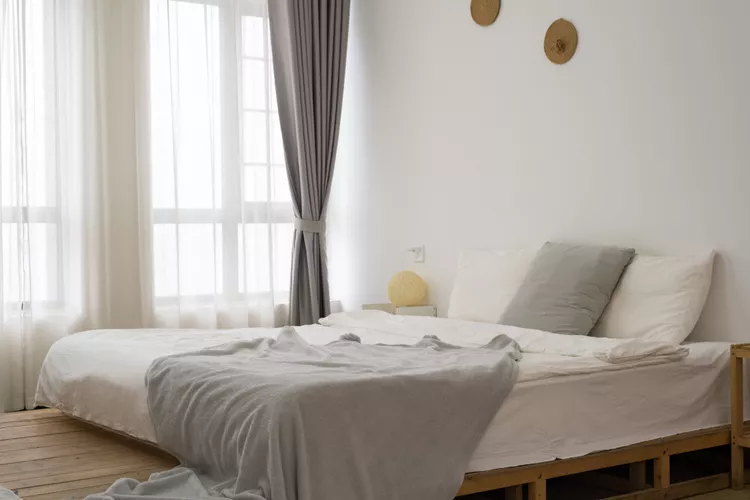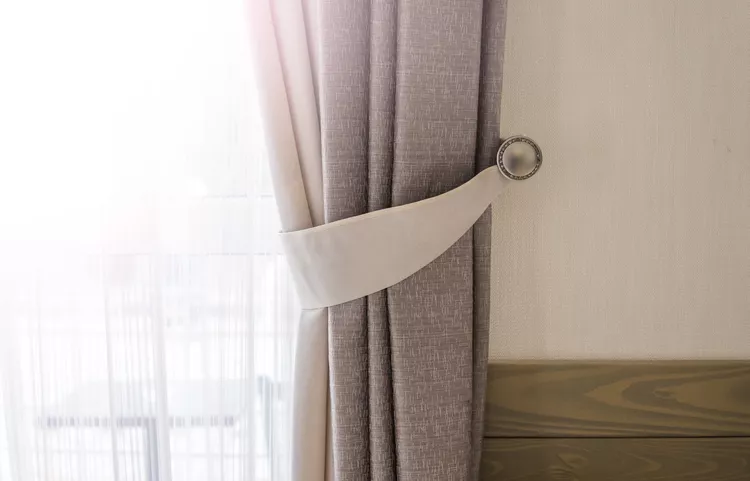Bedroom
Choosing the Best Curtains for Your Bedroom: A Simple Guide

Choosing Bedroom Curtains Tips: Create a Stylish and Functional Space
Your bedroom deserves the perfect combination of comfort, style, and privacy, and curtains play a significant role in achieving that ambiance. Curtains impact both aesthetics and functionality, providing warmth, color, and controlling light exposure to enhance sleep quality. Understanding the right fabrics, styles, and hardware ensures your bedroom feels inviting, personalized, and professionally decorated without sacrificing comfort.
You might also enjoy the articles on our other site: Pantene Teams Up with Kelsea Ballerini for New Campaign Launch
Best Fabrics for Bedroom Curtains
When choosing bedroom curtains, selecting the proper fabric is essential for both look and function. Heavier fabrics block sunlight and noise, while lighter fabrics maintain airiness and soft texture.
Cotton: Cotton is breathable, lightweight, and easy to clean. Machine-washable cotton simplifies maintenance while adding timeless elegance to any bedroom décor.
Silk: Silk creates a luxurious aesthetic by allowing filtered light to illuminate the room. However, silk requires delicate care and careful handling to avoid damage.
Velvet: Velvet insulates windows against drafts and bright sunlight, keeping rooms warmer in winter and cooler in summer, perfect for nurseries or late sleepers.
Polyester: Polyester is affordable, low-maintenance, and resistant to wrinkles, making it ideal for budget-conscious homeowners or first-time curtain buyers in bedrooms.
Linen: Linen drapes beautifully, diffuses sunlight softly, and adds a natural, rustic charm to bedrooms. Linen curtains often pair well with coastal and modern décor.
How to Select Colors and Patterns
Choosing colors and patterns for bedroom curtains significantly affects room mood and visual appeal. Complementing wall colors and furniture ensures a cohesive, inviting design.
Avoid overly bright or neon colors, which may clash with interior elements or fade under constant sunlight exposure. Subtle patterns can act as functional wall art, providing visual interest while maintaining serenity. Textured fabrics or soft geometric patterns enhance aesthetic appeal without overwhelming the room.
Styles of Curtains to Consider

When selecting curtain styles, consider the room’s formality, window size, and personal taste. Curtain styles can range from casual to elegant.
Pinch Pleats: Provide a traditional and formal look, creating uniform folds and adding sophistication to master bedrooms.
Gathers: Gathered curtains offer a softer, informal aesthetic suitable for smaller windows or cozy bedrooms.
Grommets: Metal-ring grommets allow curtains to slide smoothly on rods, providing convenience and modern style.
Tab Tops: Fabric loops make installation easy while supporting weight and offering a casual, versatile appearance for various designs.
Box Pleats: Structured pleats create a columnar look, giving sleek formality without overwhelming the overall design.
Swags: Decorative scarves or swags drape beautifully above windows, complementing other curtains for layered light control and visual depth.
Choosing Bedroom Curtains Tips: Hardware and Accessories

A durable curtain rod supports heavier fabrics, enhancing aesthetics and functionality. Rod finishes should complement curtain fabric textures for cohesion.
Curtain Length: Standard lengths include 84, 96, and 108 inches. Custom lengths ensure perfect floor-to-ceiling coverage for dramatic or precise looks.
Placement: Mount curtains four to six inches above the window frame to maximize height perception and window coverage.
Layering: Sheer curtains paired with blackout drapes allow daytime light control while offering complete privacy at night.
Tiebacks: Functional and decorative tiebacks help keep curtains organized and add subtle style touches to bedroom décor.
Blackout Shades: Consider installing blackout shades behind curtains to maximize sleep quality without affecting daytime elegance.
Expert Advice: Choosing Bedroom Curtains Tips
Experts emphasize that securing proper measurements, fabric selection, and installation hardware ensures long-term satisfaction. High-quality hardware and fasteners enhance both style and durability.
Properly installed curtains reduce wear, minimize shifting, and improve room insulation against heat, cold, or sunlight exposure. Layered designs allow seasonal adjustments, offering versatility and prolonged fabric lifespan. Using curtain accessories like clips, rods, and tiebacks complements décor while improving usability and function.
Remember to balance aesthetics with functionality: heavier fabrics provide privacy and insulation, while lighter fabrics maintain airiness and elegance. Professional consultation may help if you plan custom curtains for unusually shaped or oversized windows.
Frequently Asked Questions
Should bedroom curtains reach the floor? Curtains should meet or slightly puddle on the floor for a polished effect, with six to sixteen inches extra for drama.
Can you use blinds with curtains? Yes, combining blinds and curtains allows precise light control and privacy while maintaining decorative appeal in any bedroom.
Are there alternatives to curtains? Yes, options include valances, shades, shutters, Roman shades, or vertical panels, each offering functional and aesthetic benefits.
Conclusion
Using expert Choosing Bedroom Curtains Tips ensures your bedroom feels comfortable, private, and visually appealing. Selecting the right fabrics, colors, styles, and accessories improves sleep quality and room design. Proper installation, layering, and measurement precision keep curtains functional and elegant while maximizing aesthetic appeal.
You might also enjoy the articles on our other site: Supermalt Launches First Stout, Enters Alcohol Market
Explore more news on this website to discover additional bedroom décor ideas, window treatment solutions, and home improvement strategies.
